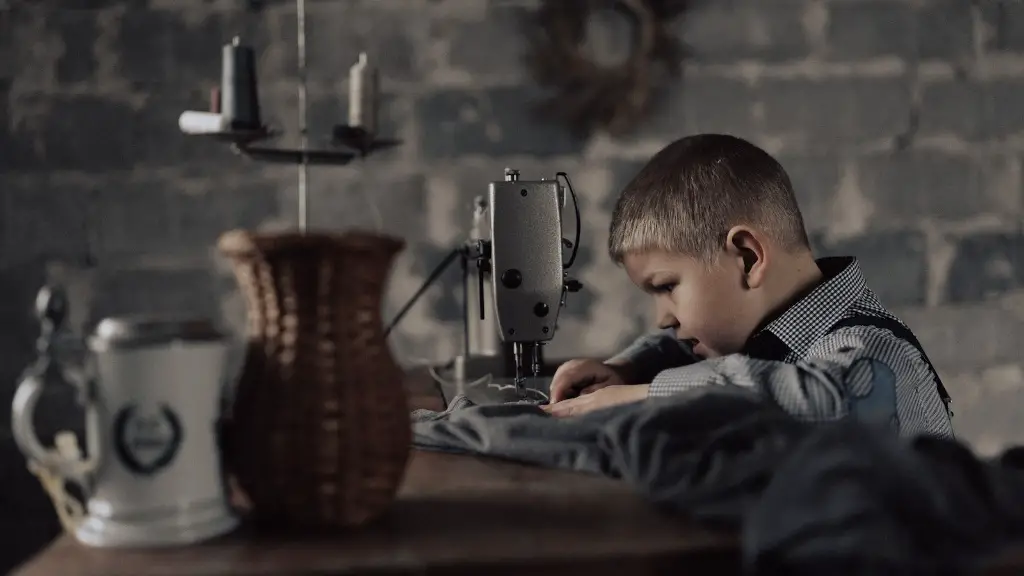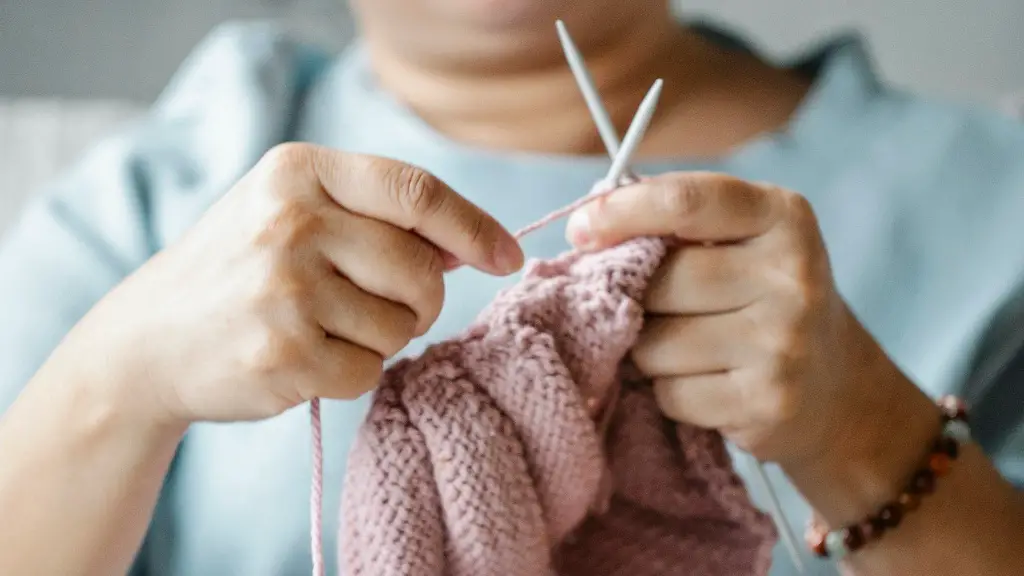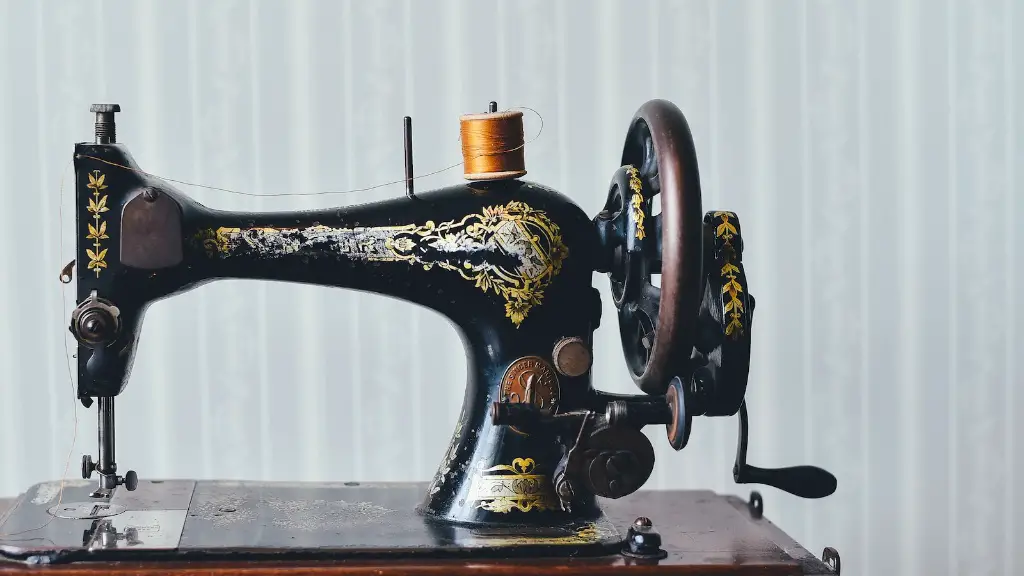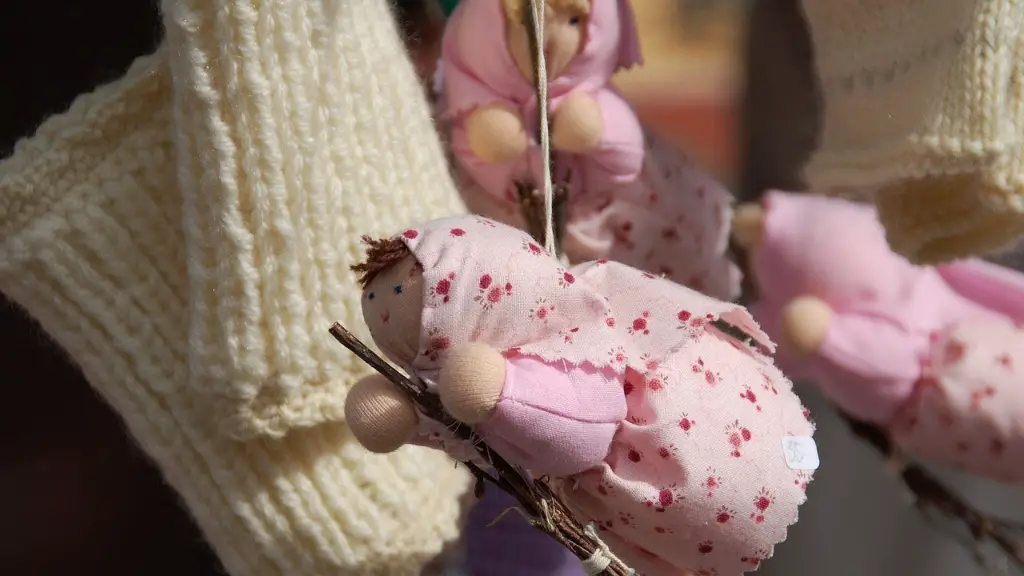What is Hemming?
Hemming is an important part of sewing in which a cloth edge, or hem, is folded back and finished with stitching. Hemming knits on a sewing machine is a technique that allows for a stronger and more polished finished product. Hemming knit fabrics on a sewing machine is more common and straightforward than hemming woven fabrics. This is because knit fabrics are more forgiving and require fewer finishing stitches in order to hold a shape.
Types of Hemming
There are some different types of hems that one can use when hemming knits. Most commonly, bias tape hems are used and they can be sewed on a sewing machine. The bias tape can be cut to the right size and then topstitched onto knit fabric.
Another type of hem is a Swiss edging, also referred to as baby hem. To achieve this look, a decorative stitch or chain stitch is used. The chain stitch is sewn close to the edge of the fabric, about 3mm away from the edge. This type of hem looks particularly nice on light weight knit fabrics.
Ribbing
Ribbing is yet another type of hem used for knits. It is commonly used for garments like garments that have a snug fit. Ribbing hems are achieved by using a zig zag stitch to hold the fabric together. The zig zag stitch has different width and length settings depending on the knit fabric. Ribbing hems are usually folded inwards and then sewn with a wide stitch.
Topstitched Hem
The topstitched hem is a classic hemming finish and it can be used for knits as well. All that is required is to fold the edge of the knit fabric twice so that the raw edge is encased. This type of hem is usually finished with a straight stitch. A narrow stitch is usually used but you could also use a decorative stitch to make it look more interesting. This type of hem is often used on the bottom of knit sweaters and tops.
Coverstitched Hem
Coverstitching is a type of stitching that is used to finish the edges of knit fabrics. It is done by using a special machine that has two or three needles for stitching. The coverstitch is made using two different thread colours, one for the top thread and the other for the bottom thread. The result is a neat, professional looking hem that is very durable.
Gathered Hem
Gathered hems are perfect for adding a decorative touch to knit garments. It’s done by gathering the knit fabric so that it is slightly longer than the desired hem length. Then gather it together and stitch it in place with a decorative stitch. This type of hem looks great when used with lightweight knit fabrics like jersey.
Tools and Materials
To hmm knits on a sewing machine you will need a few tools and materials. For the majority of the hems discussed here, the basic sewing tools will suffice. You will need a needle, threads, a pair of scissors, pins and a tape measure. Depending on the type of hem, you may also need a special foot or needle. You will also need a sewing machine, and it should be suitable for sewing knits.
Tips and Techniques
Before you start hemming a knit fabric on a machine, make sure that the fabric has been pre-washed and dried to avoid any shrinkage. Always use a stabilizer when hemming to keep the fabric in place. Choose the right needle and thread for the fabric. A ballpoint or stretch needle should be used for knits and a lightweight thread will work best.
When hemming knits, it is best to start with a few practice stitches on a scrap piece of fabric. This will help to build confidence and familiarize yourself with the machine and the fabric. Take your time and remember to backstitch to secure the stitches.
Tailored Hem
For a tailored hem, you will need a tailored hem foot to get a sleek, professional finish. A tailored hem foot has a wire that runs along the side and helps to keep the finished edge straight. To achieve this type of hem, the wire is positioned on the hem and the fabric is pressed with the foot. This will leave a crisp, tailored edge that looks great on knit skirts.
Mock Overlock Hem
For a mock overlock hem, a narrow zig zag stitch is required. The best way to achieve this is to use a triple straight stitch. This stitch consists of three needles and they should be set at a small width setting. The stitch length should also be adjusted to be shorter rather than longer.
Felled Hem
A felled hem is a hem that is folded and sewn with an enclosed raw edge. It is finished with a straight stitch that is slightly wider than the rest of the stitching. To achieve this hem, the fabric is folded twice and then sew with a straight stitch. This is a great way to finish garments that may come into contact with water, such as rain jackets or outerwear.
Serged Hem
Serging is a popular hemming technique for knits. It’s done by using a special serger machine that has two to four needles that stitch the fabric together. The fabric should be pre-shrunk before serging to avoid any shrinkage after the hem is finished. The hem should then be trimmed and finished with a overlock stitch.
Conclusion
Hemming knits on a sewing machine is a straightforward process that yields a secure and durable finished product. With a few basic tools and materials, you can easily create hems in various styles to suit your needs. Try out the different types of hemming discussed in this article and find the one that best suits your project.



